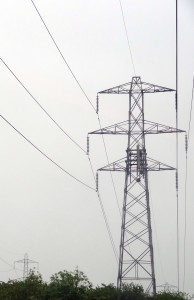 It’s not the first retailer to go into administration and it won’t be the last, but the well-known high street retailer Peacocks will continue to trade for the foreseeable future thanks to Edinburgh Woolen Mill.
It’s not the first retailer to go into administration and it won’t be the last, but the well-known high street retailer Peacocks will continue to trade for the foreseeable future thanks to Edinburgh Woolen Mill.
The administrators were called in at the beginning of 2012, as Peacocks total debt reach £750 million and it was unable to restructure £240 million of this debt. Edinburgh Woollen Mill has bought the company out of administration, protecting 6000 jobs in the UK. However, at the same time more than 3000 workers will be made redundant, as 224 stores cease trading.
Throughout the recession, retailers across the UK have been struggling, as household incomes have remained low, causing consumer spending to fall. One of the administrators from KMPG, commented that:
‘This (the low consumer demand), combined with a surplus of stores and unsustainable capital structure, led to the business becoming financially unviable.’
 The coming months will be crucial in determining whether more jobs are lost and if there are any further store closures. Much hinges on the ability of Edinburgh Woollen Mill to stabilize the financial performance of Peacocks and stimulate renewed customer demand. The following articles consider this take-over.
The coming months will be crucial in determining whether more jobs are lost and if there are any further store closures. Much hinges on the ability of Edinburgh Woollen Mill to stabilize the financial performance of Peacocks and stimulate renewed customer demand. The following articles consider this take-over.
Peacocks closes 19 Ulster stores with 263 job losses Belfast Telegraph (23/2/12)
Peacocks Takeover: Edinburgh Woollen Mill buy retailer but 3,100 jobs lost BBC News (including video) (22/2/12)
Peacocks piqued by PIKs Guardian, Nils Pratley (22/2/12)
Edinburgh Woollen Mill buys Peacocks Independent, James Thompson (23/2/12)
Peacocks sold to Edinburgh Woollen Mill – KPMG The Wall Street Journal, Jessica Hodgson (23/2/12)
Questions
- Why has consumer demand in the retails sector fallen during the recession?
- What type of take-over would you classify this as?
- Who are Peacocks’ main competitors? In which market structure would you place the retail sector? Explain your answer.
- The Guardian article refers to the Management-buy-out of Peacocks in 2005. What is a management-buy-out? What were the problems associated with it?
- What are the problems that have been identified as causing Peacocks to go into administration?
- To what extent do you think the Management-buy-out of 2005 is the main reason why Peacocks has fallen into administration?
 Is Google’s Android catching up with Apple’s iOS in the market for apps? With Android tablets and smartphones taking an ever larger proportion of the market, you would expect so. In the third quarter of 2011, 53% of smartphone shipments used Google’s Android system, compared with only 15% with iOS.
Is Google’s Android catching up with Apple’s iOS in the market for apps? With Android tablets and smartphones taking an ever larger proportion of the market, you would expect so. In the third quarter of 2011, 53% of smartphone shipments used Google’s Android system, compared with only 15% with iOS.
However, Apple is still ahead of Google in the share of apps downloads. To date, there have been 18 billion downloads from the iOS App Store for iPhone, iPad and iPod Touchs compared with 10 billion downloads of Android apps. But Android downloads are growing faster and are set to overtake those of iOS apps in the coming months. This should be boosted with the new Ice Cream Sandwich Android operating system.
But what about revenues earned from downloads? Here the picture is very different. Android Marketplace has earned around $330 million gross revenue for paid apps. Apple’s App Store, by contrast, has earned over 15 times as much: nearly $5000 million. The reason is that 99% of Android apps are free; the figure for App Store apps is 86%. But why is this so and how can Android earn revenues from its apps? And how can app developers earn revenues from the Android market? The following articles look at the economics of apps.
Android Vs. iPhone: The Economics Of Apps Financial Edge, Manish Sahajwani (6/1/12)
Google has an Amazon problem MSN Money, Jim J. Jubak (25/1/12)
Android and the economics of apps BBC News, Rory Cellan-Jones (7/12/11)
Apple Getting Best Of The Android Vs. iPhone Economics Forbes, Manish Sahajwani (6/1/12)
Fragmentation Is Not The End of Android cek.log, Charlie Kindel (14/1/12)
Questions
- Why are most Android apps free to download?
- What is the business model for (a) developing and (b) offering Android apps?
- How can money be made from free apps?
- What are the long-term strengths and weaknesses in Apple’s apps business model?
- Assess Amazon’s business model for apps for Kindle users.
 Every firm has been hit by the recession and for most, it’s been bad news. However, the latest firm to file for bankruptcy is an interesting case, as the causes extend well beyond a weak economy. The company in question? Eastman Kodak. Renowned for inventing the hand-held camera and being the market leader, selling 90% of photographic film and 85% of all cameras in the USA in 1976, the company has since seen a large change in its fortunes.
Every firm has been hit by the recession and for most, it’s been bad news. However, the latest firm to file for bankruptcy is an interesting case, as the causes extend well beyond a weak economy. The company in question? Eastman Kodak. Renowned for inventing the hand-held camera and being the market leader, selling 90% of photographic film and 85% of all cameras in the USA in 1976, the company has since seen a large change in its fortunes.
Massive competition has emerged from all over the globe and the company has seemed to lag behind the digital revolution. Arguably, unwilling to take risks and making some strategic errors, Kodak saw its stock tumble from $94 in 1997 to under $1 per share in 2012. Since 2004, Kodak has only seen one profitable year. With massive competitors in the world of digital photography, the market has become a highly competitive one. As Rupert Goodwins, the editor of technology website ZDNet said:Kodak made all its money from selling film, then the digital camera came along and now no-one’s buying film. It’s not like they didn’t see it coming. Kodak hesitated because they didn’t want to eviscerate their business.
By filing for bankruptcy, Kodak is protected and its operations will continue for the time being, perhaps giving the company time to have a rethink and a reorganization. Eastman Kodak has previously tried to take a new direction and has been moving away from film and towards its printer, software and packing businesses. The problem is that these markets already have some very strong competitors: Hewlett Packard, Canon and Epson. It’s a difficult job to break into this market and gain market share.
The future of the company is very much in the balance and as reorganization of its operations looks inevitable, so does a loss of jobs. Thank goodness it only employs some 19,000 workers and not the 145,000 it did back in its day. Bankruptcy will certainly keep the creditors at bay for the time being, but it is by no means a long term solution to the company’s ailing profits. The following articles consider this ‘Kodak moment’.
Eastman Kodak files for bankruptcy protection BBC News (19/1/12)
Eastman Kodak files for bankruptcy The Christian Science Monitor, Ben Dobbin (19/1/12)
Kodak: From Brownie and roll film to digital disaster BBC News, James Cowling (19/1/12)
Kodak files for bankruptcy CNN Money, Aaron Smith and Hibah Yousuf (19/1/12)
Photography pioneer Kodak files for bankruptcy Reuters, Jonathan Stempel (19/1/12)
Kodak: 30 fascinating facts The Telegraph, Matthew Sparkes (19/1/12)
Kodak: why the moment has oassed Guardian, Simon Waldman (19/1/12)
Questions
- Using the product life cycle, explain where Kodak currently lies.
- To what extent are Kodak’s current problems related to the obsolescence of their products and not the recession?
- What strategic errors have Kodak made?
- What has caused Kodak’s collapse in share prices and profitability?
- Why is Eastman Kodak finding it difficult to gain market share in other markets, such as printing?
- What options are open to Kodak for the future if it is to become profitable once more?
 In an earlier blog Energy profits margins up by over 700% we analysed the increasing pressure on many households as they saw their energy bills increase in price year on year. This helped the big six energy companies achieve a 700% rise in their profits.
In an earlier blog Energy profits margins up by over 700% we analysed the increasing pressure on many households as they saw their energy bills increase in price year on year. This helped the big six energy companies achieve a 700% rise in their profits.
However, it also sparked interest by the regulator Ofgem, which was looking to ensure that consumers found it easier to make price comparisons and create a more competitive market. One issue that Ofgem were looking into was how to make the energy sector more open to competition, given that the big six companies own the power stations and hence this acts as a barrier to the entry of new firms.
The latest announcements from some of the big energy companies will therefore come as a pleasant turn of events for Ofgem. On Wednesday January 11th 2012, EDF announced that it would be cutting its energy prices by 5% from 7th February in response to a fall in wholesale costs. Only a day later, Npower announced its plans to cut its tariffs by 5% from 1st February. British Gas cut its prices by 5% with immediate effect and SSE will reduce its gas prices by 4.5% from March 26th.
Is this a sign that the market is becoming more competitive thanks to Ofgem or is there another explanation? For the past 2 winters, temperatures have been consistently below freezing and hence demand for gas/electricity was at an all time high, speaking concerns of gas shortages. However, with the mild winter we are currently experiencing (I hope I haven’t jinxed it!) demand for heating etc has been significantly lower, which has reduced wholesale costs and the big six companies have begun to pass these savings on to their customers. Yet, despite this seemingly good news, are they being as ‘kind’ as we think? Most of the companies are cutting their prices by about 5%, yet wholesale prices fell by significantly more than that. Furthermore, over the past few years, customers have seen their tariffs increase significantly – by a lot more than 5%. To some extent, this confirms the criticism levelled at the energy sector – when costs rise, they are quick to pass on the full costs to their customers. But, when costs fall, they are slow to pass on only a fraction of their cost savings. The following articles consider this issue.
Npower will cut gas prices by 5% BBC News (13/1/12)
EDF cuts gas price by 5% Reuters, Karolin Schaps and Henning Gloystein (11/1/12)
British Gas readies push to promote price cut MarketingWeek, Lara O’Reilly (13/1/12)
British Gas cuts prices by 5% Independent (13/1/12)
Energy suppliers do battle in the war of modest price cuts The Telegraph, Emily Godsen (13/1/12)
British Gas and SSE follow EDF Energy price cut Financial Times, Guy Chazan and Sylvia Pfeifer (11/1/12)
British Gas cuts electricity prices, but keeps gas on hold Guardian, Hillary Osborne (12/1/12)
British gas and SSE announce price cuts (including video) BBC News (12/1/12)
More power firms cut energy tariffs The Press Association (12/1/12)
Questions
- In which market structure would you place the energy sector? Explain your answer.
- What is the role of Ofgem? What powers does it (and the other regulators have)?
- Using a demand and supply diagram to help you, explain why wholesale costs have fallen.
- Why have the energy companies only passed on about 5% of cost savings to their customers, despite falls in wholesale costs of significantly more than that?
- Do you think price wars are likely to break out in this sector? Are they in the interests of consumers?
- Why did energy prices increase so quickly last year and the year before? Use a diagram to help you.
Ministers from around the world met in Durban in the first two weeks of December 2011 to hammer out a deal on tackling climate change. The aim was that this would replace the Kyoto Treaty, due to expire at the end of 2012.
International climate change agreements are particularly difficult to achieve, as there are several market failures involved. Also, there is considerable ‘gaming’, as each country seeks to negotiate a deal that benefits the world as a whole but which minimises the disadvantages to their own particular country.
The conference ended on the 11 December with a last-minute deal. Both developed and developing countries would for the first time work on a legally binding agreement to limit emissions. This would be drawn up by 2015 and to come into force after 2020. The following articles assess the significance of the agreement and whether it represents real progress or little more than a deal to work on a deal.
Articles
‘Modest’ gains as UN climate deal struck Independent (11/12/11)
Landmark deal saves climate talks Irish Examiner (11/12/11)
Durban climate change: the agreement explained The Telegraph, Louise Gray (11/12/11)
Durban climate conference agrees deal to do a deal – now comes the hard part Guardian, Fiona Harvey and Damian Carrington (13/12/11)
Climate deal: A guarantee our children will be worse off than us Guardian, Damian Carrington (11/12/11)
Durban climate deal: the verdict Guardian, Damian Carrington (12/12/11)
Australia hails Cop 17 agreement News 24 Australia (11/12/11)
Climate talks reach new global accord Financial Times, Andrew England and Pilita Clark (11/12/11)
Durban Climate Talks Produce Imperfect Deals Voice of America, Gabe Joselow (11/12/11)
Critics slam climate agreement t Sydney Morning Herald, Arthur Max (11/12/11)
 Deal at last at UN climate change talks Euronews on YouTube (11/12/11)
Deal at last at UN climate change talks Euronews on YouTube (11/12/11)
World still in arrears on climate change pledges Reuters Africa, Barbara Lewis (11/12/11)
New UN climate deal struck, critics say gains modest Hindustan Times (11/12/11)
Climate change: ambition gap Guardian (12/12/11)
Canada leaves Kyoto to avoid heavy penalties Financial Times, Bernard Simon (13/12/11)
Durban Platform Leaves World Sleepwalking Towards Four Degrees Warming Middle East North Africa Financial Network, Ben Grossman-Cohen and Georgette Thomas (Oxfam) (13/12/11)
A deal in Durban The Economist (11/12/11)
Assessing the Climate Talks — Did Durban Succeed? Harvard University – Belfer Center for Science and International Affairs – An Economic View of the Environment, Robert Stavins (12/12/11)
Questions
- What was agreed at the Durban Climate Change Conference?
- Why is it difficult to get agreement on measures to tackle climate change? How is game theory relevant to explaining the difficulties in reaching an agreement?
- How would you set about establishing the ‘optimal’ amount of emissions reductions?
- Why will the market fail to provide the optimal amount of emissions reductions?
- Why was it felt not possible for a legally binding international agreement to come into force before 2020?
 It’s not the first retailer to go into administration and it won’t be the last, but the well-known high street retailer Peacocks will continue to trade for the foreseeable future thanks to Edinburgh Woolen Mill.
It’s not the first retailer to go into administration and it won’t be the last, but the well-known high street retailer Peacocks will continue to trade for the foreseeable future thanks to Edinburgh Woolen Mill. The coming months will be crucial in determining whether more jobs are lost and if there are any further store closures. Much hinges on the ability of Edinburgh Woollen Mill to stabilize the financial performance of Peacocks and stimulate renewed customer demand. The following articles consider this take-over.
The coming months will be crucial in determining whether more jobs are lost and if there are any further store closures. Much hinges on the ability of Edinburgh Woollen Mill to stabilize the financial performance of Peacocks and stimulate renewed customer demand. The following articles consider this take-over.


